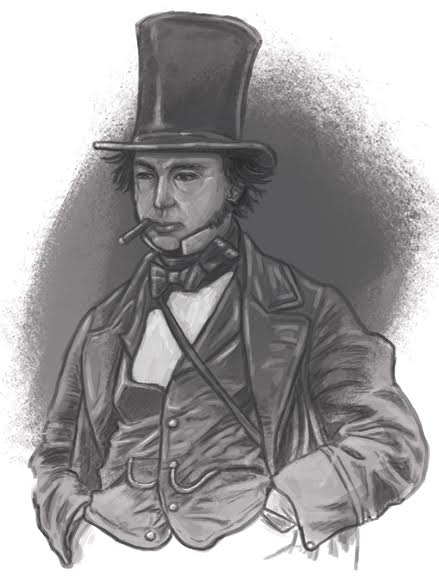Sir Marc Isambard Brunel and the World’s First Underwater Tunnel
The Thames Tunnel was the Big Dig of its day, what was originally supposed to be a project of only a few months took over 40 years to complete, with numerous engineering problems and even a few deaths hindering the project.
Digging an underground tunnel in soft earth is one of the biggest challenges in civil engineering, but in the early 19th century, engineers in London were faced with a new, even more complicated challenge, building a tunnel under a body of water. The Thames Tunnel originated from a need for a connection between the North and South /banks of the Thames River and to link the expanding docks on each side of the river. After two failures in 1799 and 1805-09 the project was abandoned with the engineers involved determining that building an underground tunnel built under a water way was impractical. This sentiment continued until an engineer named Marc Isambard Brunel created a proposal for a similar tunnel to be built under the Neva River in St. Petersburg, Russia in 1814. This plan was eventually dropped in favor of a bridge, but if drove Brunel to keep developing new technology and techniques for tunneling.
4 years later in 1818, Brunel and Thomas Cochrane (The Earl of Dundonald) patented the tunneling shield, a protective structure designed to support tunnel construction that is still being used to this day. In 1823 Brunel created a plan, utilizing the new shield technology, for a tunnel between the Rotherhithe and Wapping sides of the Thames. After securing financing the Thames Tunnel Company was formed in 1824 and construction began at the beginning of February 1825.
The initial construction began on the South bank at Rotherhithe. They started by assembling an iron ring 50 feet in diameter with a brick wall 40 feet high and 3 feet thick built on top of it, a powerful steam engine was surmounted to it in order to drive the excavation’s pumps. Altogether everything weighed in at around 1,000 tons. The soil under the ring was removed manually by workers on site, after which the entire ring was sunk into the soft ground under its worn weight like a giant cookie cutter. Workers then continued weighing it down, pushing it further into the ground with more than 50,000 bricks, a problem was later encountered with the ring getting stuck due to the top and bottom sides being parallel to each other, so the Wapping side shaft was built to be slightly wider at the top and bottom, the new shape ensured that that side did not get stuck as they pushed forward to meet the two sides underneath the Themes.
As construction moved along, many of those working on the tunnel, including Brunel himself, became sick from exposure to the filthy sewage-laden water that seeped into the tunnel from the river above. The sewage also gave off methane gas which was then ignited by the oil lamps that the miners used. Marc Brunel’s son, Isambard Kingdom Brunel, was brought in after the resident engineer on fell ill in 1826. Despite the dangers, the company earned extra money off of the tunnel project by allowing sightseers to view the excavation, roughly 600-800 visitors would pay a shilling a piece per day for the opportunity.
In 1827 the tunnel flooded for the first time. After repairs and draining of the affected area was complete, Isambard reassured investors by holding a banquet in the previously flooded section. In 1828 it flooded again, killing 6 men and nearly killing Isambard, after which financial problems lead to the tunnel being walled off and the shield being abandoned for 7 years. In 1834 Marc Brunel succeeded in raising the money ne needed to continue digging. A new and improved tunneling shield was brought in to replace the old one and work resumed. The tunnel construction would flood 4 more times, suffer from fires and various gas leaks, but would push through and finally be completed in 1841.
After completion the Thames Tunnel was fitted with lighting, roadways, and a spiral staircase, along with an engine house that contained drainage equipment, opening to the public in 1843. The completed project quickly gained attention as a major tourist attraction, with American Traveler William Allen Drew proclaiming it as the “8th wonder of the world.”
The Tunnel originally saw mostly foot traffic but would later be incorporated into the London Underground, and now stands as a major part of subway travel for many Londoners and as one of the most important engineering feats of the last 200 years.

